Drought zones have been declared across much of England and Wales, yet Scotland has just registered its wettest-ever May. The warmest British spring in 100 years followed one of the coldest UK winters in 300 years. June in London has been colder than March. February was warm enough to strip on Snowdon, but last Saturday it snowed there.
Welcome to the climate rollercoaster, or what is being coined the "new normal" of weather. What was, until quite recently, predictable, temperate, mild and equable British weather, guaranteed to be warmish and wettish, ensuring green lawns in August, now sees the seasons reversed and temperature and rainfall records broken almost every year. When Kent receives as much rain (4mm) in May as Timbuktu, Manchester has more sunshine than Marbella, and soils in southern England are drier than those in Egypt, something is happening.
Sober government scientists at the centre for hydrology and ecology are openly using words like "remarkable", "unprecedented" and "shocking" to describe the recent physical state of Britain this year, but the extremes we are experiencing in 2011 are nothing to the scale of what has been taking place elsewhere recently.
Last year, more than 2m sq km of eastern Europe and Russia scorched. An extra 50,000 people died as temperatures stayed more than 6C above normal for many weeks, crops were devastated and hunderds of giant wild fires broke out. The price of wheat and other foods rose as two thirds of the continent experienced its hottest summer in around 500 years.
This year, it's western Europe's turn for a mega-heatwave, with 16 countries, including France, Switzerland and Germany (and Britain on the periphery), experiencing extreme dryness. The blame is being out onEl Niño and La Niña, naturally occurring but poorly understood events that follow heating and cooling of the Pacific ocean near the equator, bringing floods and droughts.
Vast areas of Europe have received less than half the rainfall they would normally get in March, April and May, temperatures have been off the scale for the time of year, nuclear power stations have been in danger of having to be shut down because they need so much river water to cool them, and boats along many of Europe's main rivers have been grounded because of low flows. In the past week, the great European spring drought has broken in many places as massive storms and flash floods have left the streets of Germany and France running like rivers.
But for real extremes in 2011, look to Australia, China and the southern US these past few months. In Queeensland, Australia, an area the size of Germany and France was flooded in December and January in what was called the country's "worst natural disaster". It cost the economy up to A$30bn (£19.5bn), devastated livelihoods and is still being cleaned up.
In China, a "once-in-a-100-years" drought in southern and central regions has this year dried up hundreds of reservoirs, rivers and water courses, evaporating drinking supplies and stirring up political tensions. The government responded with a massive rain-making operation, firing thousands of rockets to "seed" clouds with silver iodide and other chemicals. It may have worked: for whatever reason, the heavens opened last week, a record 30cm of rain fell in some places in 24 hours, floods and mudslides killed 94 people, and tens of thousands of people have lost their homes.
Meanwhile, north America's most deadly and destructive tornado season ever saw 600 "twisters" in April alone, and 138 people killed in Joplin, Missouri, by a mile-wide whirlwind. Arizonans were this week fighting some of the largest wildfires they have known, and the greatest flood in recorded US history is occurring along sections of the Missouri river. This is all taking place during a deepening drought in Texas and other southern states – the eighth year of "exceptional" drought there in the past 12 years.
"I don't know how much more we can take," says John Butcher, a peanut and cotton farmer near Lubbock, Texas. "It's dry like we have never seen it before. I don't remember anything like this. We may lose everything."
The impacts of extreme weather are greater in poorer countries, which this week are trying to secure a climate deal in the resumed talks in Bonn. In Mexico, the temperature peaked at 48.8C (119.8F) in April, the warmest anywhere in the world that month, and nearly half the country is now affected by drought. There have already been 9,000 wildfires, and the biggest farm union says that more than 3.5 million farmers are on the brink of bankruptcy because they cannot feed their cattle or grow crops.
"We are being battered by the adverse impacts of climate change," says a negotiator for the G77 group of developing countries who wants to remain anonymous. "Frontline states face a double crunch of climate heat and poverty. But the rich countries still will not give us the cash they promised to adapt or reduce their emissions."
Wherever you look, the climate appears to be in overdrive, with stronger weather patterns gripping large areas for longer and events veering between extremes. Last year, according to US meteorologist Jeff Masters, who co-founded leading climate tracker website Weather Underground, 17 countries experienced record temperatures. Colombia, the Amazon basin, Peru, Cuba, Kenya, Somalia and many other countries have all registered far more or less rainfall or major heatwaves in the past few years, he says. Temperatures in Bangladesh have been near record highs, leaving at least 26 people dead in the past week; Kuwait has seen temperatures in excess of 50C and Rajasthan in India 49.6C, while parts of Canada, including Toronto, have been sizzling at a record 33C.
Rich countries may be more or less immune in the short term because the global trading system guarantees food and access to electricity allows air conditioning, but in parts of Ethiopia, Kenya and Somalia, millions of people this year have little or no food left after successive poor rainy seasons. Last week, international aid agencies warned of an impending disaster.
Sceptics argue that there have always been droughts and floods, freak weather, heatwaves and temperature extremes, but what concerns most climate scientists and observers is that the extreme weather events are occurring more frequently, their intensity is growing and the trends all suggest long-term change as greenhouse gases steadily build in the atmosphere.
Killer droughts and heatwaves, deeper snowfalls, more widespread floods, heavier rains, and temperature extremes are now the "new normal", says Nikhil da Victoria Lobo of the giant insurance firm Swiss Re, which last month estimated losses from natural disasters have risen from about $25bn a year in the 1980s to $130bn a year today. "Globally, what we're seeing is more volatility," he says.
People in the most affected areas are certainly not waiting for climate scientists to confirm climate change is happening before they adapt. In Nepal, where the rain is heavier than before, flat roofs are giving way to pitched roofs, and villagers in the drought-prone Andes are building reservoirs and changing crops to survive.
New analysis of natural disasters in 140 countries shows that climate is becoming more extreme. Last month, Oxfam reported that while the number of "geo-physical" disasters – such as earthquakes and volcanic eruptions – has remained more or less constant, those caused byflooding and storms have increased from around 133 a year in 1980s to more than 350 a year now.
"It is abundantly clear that weather-related disasters have been increasing in some of the world's poorest countries and this increase cannot be explained fully by better ways of counting them," says Steve Jennings, the report's author. "Whichever way you look at the figures, there is a significant rise in the number of weather-related disasters. They have been increasing and are set to get worse as climate change further intensifies natural hazards.
"I think that global 'weirding' is the best way to describe what we're seeing. We are used to certain conditions and there's a lot going on these days that is not what we're used to, that is outside our current frame of reference," says climate scientist Katharine Hayhoe of Texas Tech University.
New trends have been emerging for a decade or more, says the UN'sWorld Meteorological Organisation (WMO). "In Europe, a clear trend is emerging towards drier springs. This year's drought follows exceptionally dry years in 2007, 2009 and 2010," says a spokesman.
While no scientist will blame climate change for any specific weather event, many argue that these phenomena are textbook examples of the kind of impact that can be expected in a warming world. Natural events, such as La Niña and El Niño, are now being exacerbated by the background warming of the world, they say.
"It is almost impossible for us to pinpoint specific events . . . and say they were caused by climate change," says William Chameides, atmospheric scientist at Duke University, who was vice-chair of a US government-funded national research council study on the climate options for the US which reported last month. "On the other hand, we do know that because of climate change those kinds of events will very, very likely become more common, more frequent, more intense. So what we can say is that these kinds of events that we are seeing are consistent with climate change."
He is backed strongly in Europe. "We have to get accustomed to such extreme weather conditions, as climate change intensifies," saysFriedrich-Wilhelm Gerstengarbe, assistant director of the Potsdam Institute for Climate Impact Research in Germany. "Heavy storms and inundations will happen in northern Germany twice or three times as frequently as in the past."
"We've always had El Niños and natural variability, but the background which is now operating is different. [La Niña and El Niño] are now happening in a hotter world [which means more moisture in the atmosphere]," David Jones, head of climate monitoring and prediction at the Australian Bureau of Meteorology in Melbourne told Reuters after the Queeensland floods.
David Barriopedro, a researcher at Lisbon University's Instituto Dom Luiz, last month compared last year's European heatwave with the one that struck in 2003 and calculated that the probability of a European summer experiencing a "mega-heatwave" will increase by a factor of five to 10 within the next 40 years if the warming trends continue. "This kind of event will become more common," he says. "Mega-heatwaves are going to be more frequent and more intense in the future."
But there may be some respite coming from extreme weather because the El Niño/La Niña episodes are now fading fast, according to the WMO. "The weather pattern, blamed for extremely heavy downpours in Australia, southeast Asia and South America over late 2010 and early 2011, is unlikely to redevelop in the middle of 2011," it advises. "Looking ahead beyond mid-year 2011, there are currently no clear indications for enhanced risk of El Niño or La Niña in the second half of the year"
The WMO concludes, tentatively, that global weather will now return to something approaching normal. The trouble is, no one is too sure what normal is any more.






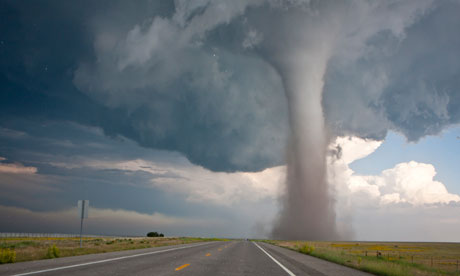

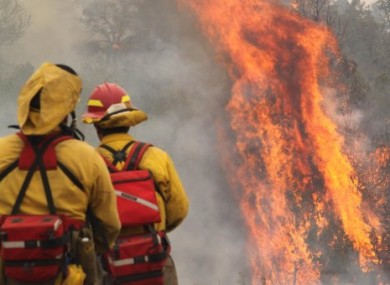
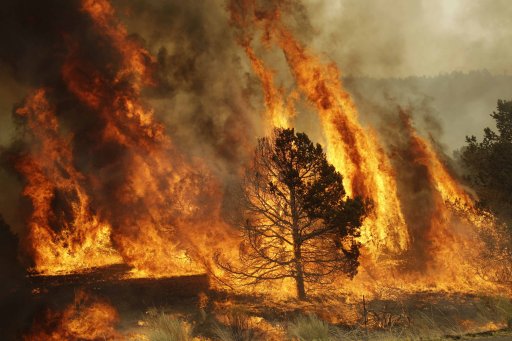
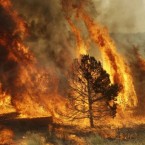
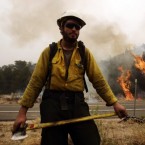
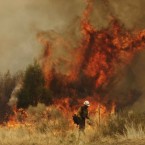
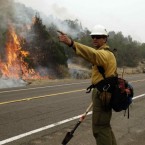
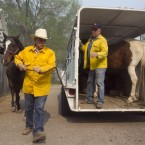
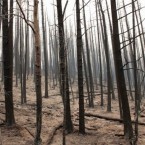
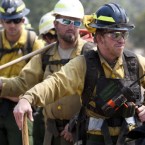




 ترجمه متون تخصصی فنی و مهندسی انگلیسی به فارسی و بالعکس در اسرع وقت با بهترین کیفیت و قیمت مناسب توسط : مهندس جعفر ارشادی فرد ISI مقالات دانشگاهی
ترجمه متون تخصصی فنی و مهندسی انگلیسی به فارسی و بالعکس در اسرع وقت با بهترین کیفیت و قیمت مناسب توسط : مهندس جعفر ارشادی فرد ISI مقالات دانشگاهی